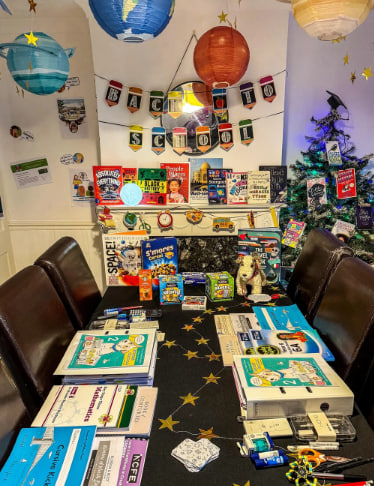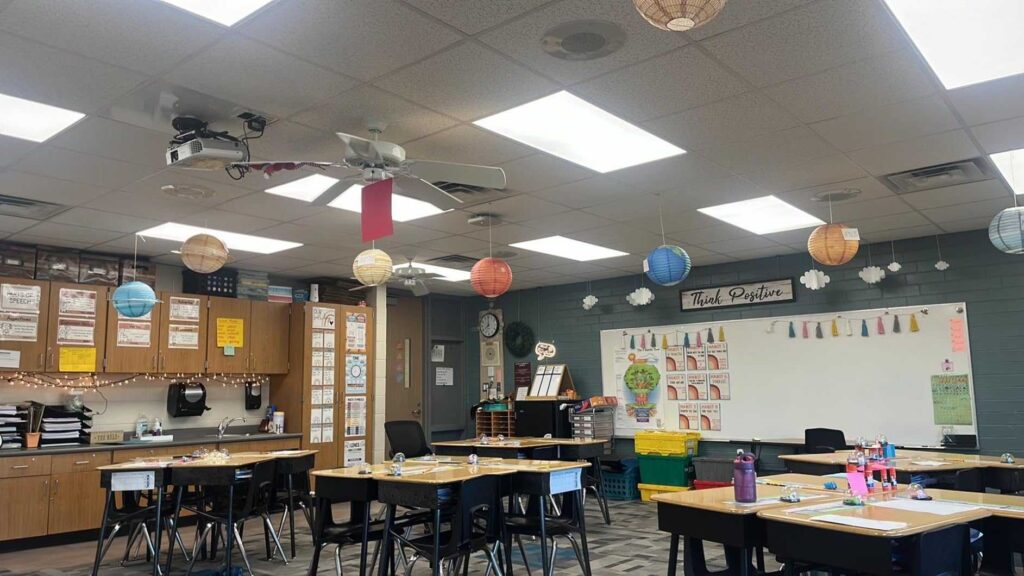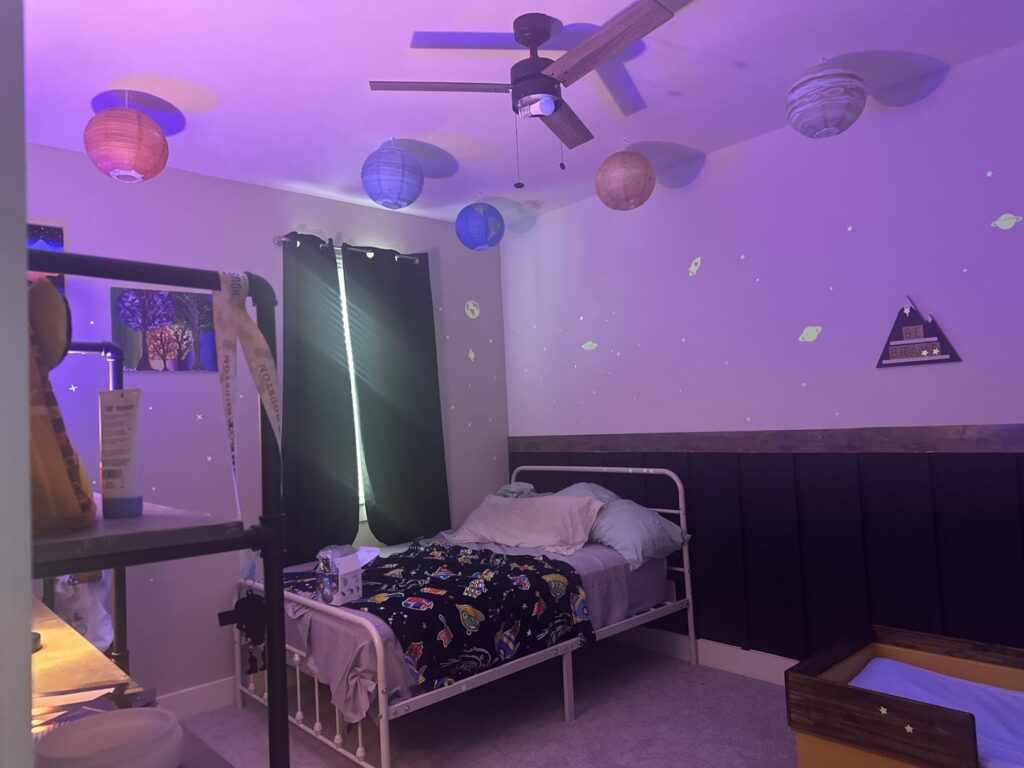

Ask almost any parent what makes learning “work” at home, and the first answer is usually curriculum. Which math program? Which reading list? Which science textbook?
But in reality, before kids even touch a workbook, they’ve already decided how they feel about learning. The atmosphere sets the stage.
A cluttered, stressful environment = resistance.
A calm, inviting space = curiosity.
Think back to your own childhood: do you remember every lesson? Probably not. But you might remember the smell of pancakes before a big school day, or the feeling of your teacher hanging student artwork on the walls. These small details create the emotional connection that makes learning stick.

On Reddit, one homeschooling mom posted about preparing her home-ed room:
“We start back to home ed tomorrow and I’m SO excited for the new year! Just set up our home ed room all ready to go and the girls are buzzing with fun energy! Tomorrow we will have a fun breakfast, take photos, go to the park, get a hot chocolate and start our curricula for the year. We’ve got some ‘not back to school’ picnics planned too as well as an outing, cooking, crafts and group as. It’s going to be fantastic and I can’t wait.”
Other parents jumped in:
“Love this!! I bet they are so excited!!! Great job!” – Known_Conflict8492
“This is the best idea I’ve seen yet! I’m a homeschooling grandma with a 5 and 3 year old.” – globarfancy
“My daughter is obsessed with astronomy. I’m decorating our homeschool room with planet lanterns.” – MCSweatpants
Notice what they’re talking about. Not grades. Not strict schedules. But feelings, rituals, and atmosphere.
You don’t need to transform your home into a Pinterest-perfect classroom. The truth is: kids notice little things.
1. Planet Lanterns – bring the universe inside
One of the most talked-about additions was a set of Solar System Paper Lanterns. Imagine a room glowing softly with Earth, Saturn, or Neptune hanging from the ceiling. Kids walk in, and instantly they feel like explorers, not just students.

👉 Solar System Lanterns on Amazon
Why it works: thematic decor sets the mood. When the room whispers “this is an adventure,” kids absorb it without words.
2. Soft lighting changes everything
Many parents underestimate how much lighting shapes behavior. Harsh, cold lights feel like a doctor’s office. Soft, warm lighting feels like a safe nook. Even a simple string of fairy lights like these can make a math lesson feel like storytime.
3. The “pride wall”
A corkboard or whiteboard where kids can pin their drawings, science notes, or even silly doodles. This turns learning into something visible and celebrated. Children feel their work matters when it’s displayed.
4. Sensory anchors
Don’t ignore sound and smell. Play quiet background music during reading (instrumental or classical). Light a mild-scent candle when starting lessons — over time, kids associate the scent with focus and calm.
Atmosphere is not just furniture. It’s also rituals. Parents shared small habits that made their days smoother:
First-day celebration: special breakfast, family photos, maybe balloons. Kids remember “back-to-school day” as fun, not dreaded.
Weekly rhythms: Monday = reading with hot chocolate. Wednesday = outdoor science. Friday = creative projects.
Seasonal themes: autumn leaves for art lessons, Christmas decorations for winter writing prompts, planet lanterns for astronomy week.
One mom wrote:
“We have a Saturday ritual of going to the library together. The kids don’t always beg for it, but once we’re there, they light up. It’s part of our rhythm now, and it makes reading feel like an adventure, not homework.”

Educational research backs this up: children learn better when they feel safe and emotionally engaged. A good learning environment does three things:
Signals importance – decorated, organized spaces tell kids: “this matters.”
Reduces resistance – cozy lighting, fun rituals, and positive vibes lower stress.
Encourages curiosity – when the room feels playful, children explore more willingly.
In other words, atmosphere isn’t fluff. It’s strategy.
Flexible spaces: a corner with cushions for reading, a table for crafts, a rug for group activities. Movement helps kids reset focus.
Personalization: let kids choose a poster, plant, or decoration. Ownership builds pride.
Nature connection: even one plant on the desk boosts calm and focus. Or rotate outdoor lessons when possible.
And remember: it doesn’t need to be perfect. Kids don’t care if your homeschool “classroom” is a dining room with crayons on the table. They care if it feels theirs.
At the end of the day, it’s not the perfect curriculum that makes kids light up — it’s the atmosphere you create around it. A room with planet lanterns, fairy lights, and a proud wall of drawings feels like an invitation, not a chore.
As one Reddit parent put it:
“Surprise your children by treating their education as a celebration. Make day one as special as a birthday party, and the rest of the year as gentle and nourishing as your love.”
That’s the real secret: kids don’t just need lessons. They need atmosphere, rituals, and a sense that learning is worth celebrating.
Frequently Asked
We prodive VR biology, VR physics, and VR chemistry simulations. Please, check our catalog.
Please, fill the form to get demo labs for free.
Please contact our customer support service at support@xreadylab.com or book a call with the team to find out the conditions and book the VR class set up at your school.
Subscription to XReady Lab interactive VR labs. If you are a school, then you are also given access to the VR classroom system. VR class system helps you easily launch VR lessons for a large number of students, follow the experience of each student, as well as customise the content without developers.
We adhere to the world’s generally accepted recommendations and research. Our products are suitable for children from 12 years old.